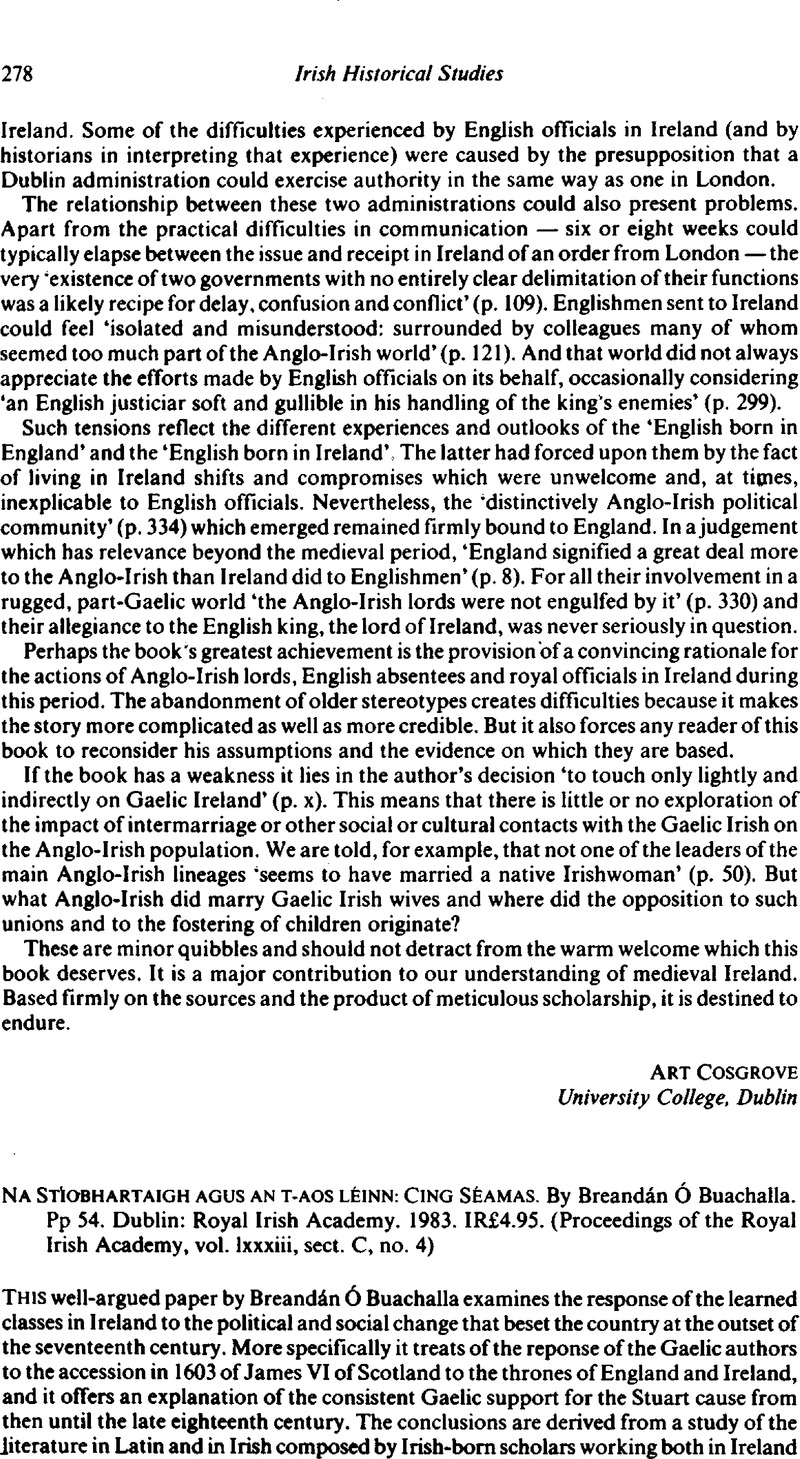No CrossRef data available.
Article contents
Na Stiobhartaigh agus an t-aos léinn: Cing Séamas. By Breandán Ó Buachalla. Pp 54. Dublin: Royal Irish Academy. 1983. IR£4.95. (Proceedings of the Royal Irish Academy, vol. lxxxiii, sect. C, no. 4)
Published online by Cambridge University Press: 28 July 2016
Abstract

- Type
- Reviews and short notices
- Information
- Copyright
- Copyright © Irish Historical Studies Publications Ltd 1984
References
Notes
1 Buachalla, Ó, Na Stiobhartaigh, p. 124.Google Scholar This argument is developed further in Buachalla, Breandán Ó, ‘An mheisiasacht agus an aisling’ in Folia Gadelica: aistí ó iardhaltaí leis a bronnadh ar Breatnach, R. A., ed. Brún, Pádraig de, Coileáin, Seán Ó and Riain, Pádraig Ó (Cork, 1983), pp 72–87.Google Scholar In reviewing the present work I have borne in mind those further developments of the argument that relate more specifically to the eighteenth century.
2 Canny, Nicholas, ‘The formation of the Irish mind: religion, politics and Gaelic Irish literature, 1580-1750’ in Past & Present, no. 95 (May 1982), pp 91–116.CrossRefGoogle Scholar
3 Cullen, L. M., ‘The hidden Ireland: reassessment of a concept’ in Studia Hibernica, ix (1969), pp. 7–47 Google Scholar; Dunne, T. J.. ‘The Gaelic response to conquest and colonisation: the evidence of the poetry’ in ibid., xx (1980), pp 7–30 Google Scholar; Tuama, Seán Ó, Filí faoi sceimhle: Seán Ó Riordain agus Aogán Ó Rathaille (Dublin, 1978), pp 88–204.Google Scholar
4 Canny, , ‘Formation of the Irish mind’, p. 116.Google Scholar In fairness to Breandán Ó Buachalla it should be pointed out that in ‘An mheisiasacht agus an aisling’ he presents a list of reasons why the expectation of Stuart support was pragmatic and realistic, but historians of the eighteenth century would not uphold these points. See especially Hayton, D. W., ‘Ireland after the Glorious Revolution, 1692-1715’ (Belfast, P.R.O.N.I., Education Facsimiles 221-40).Google Scholar




